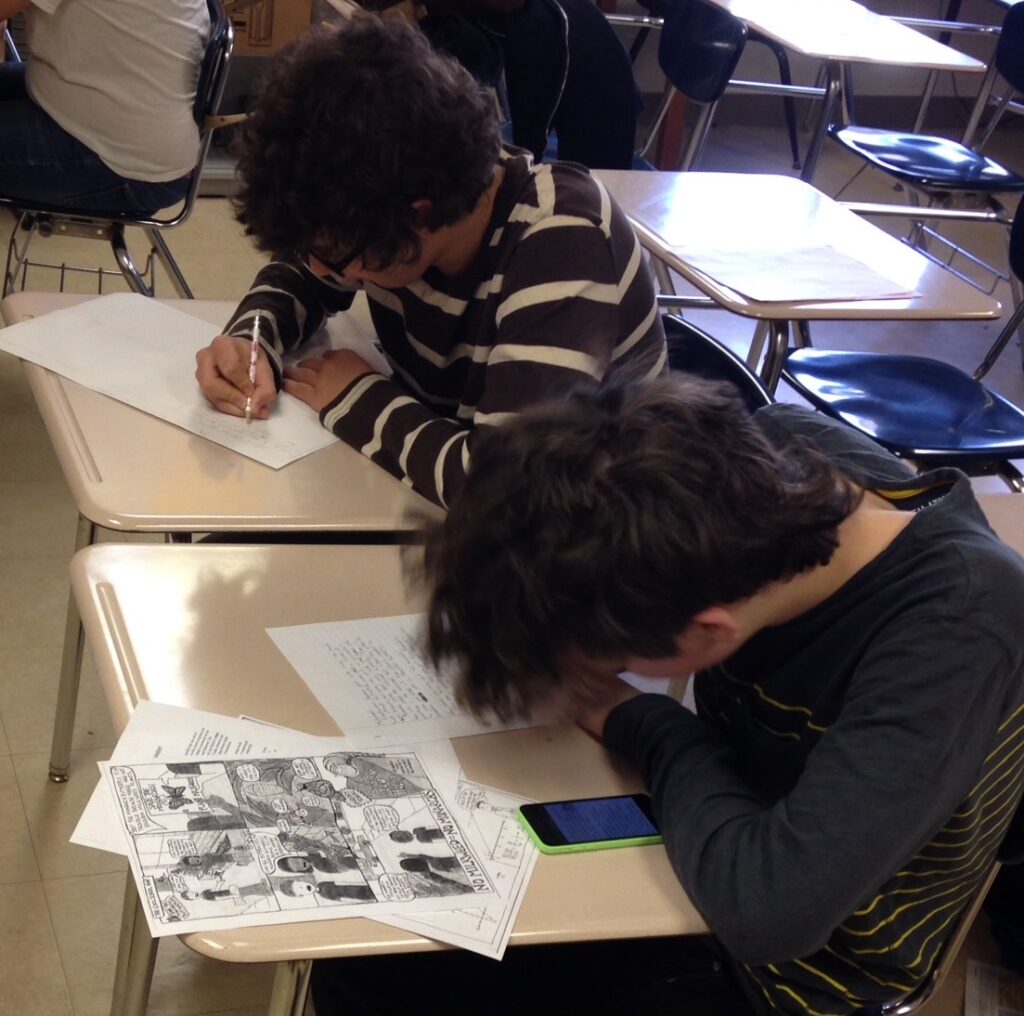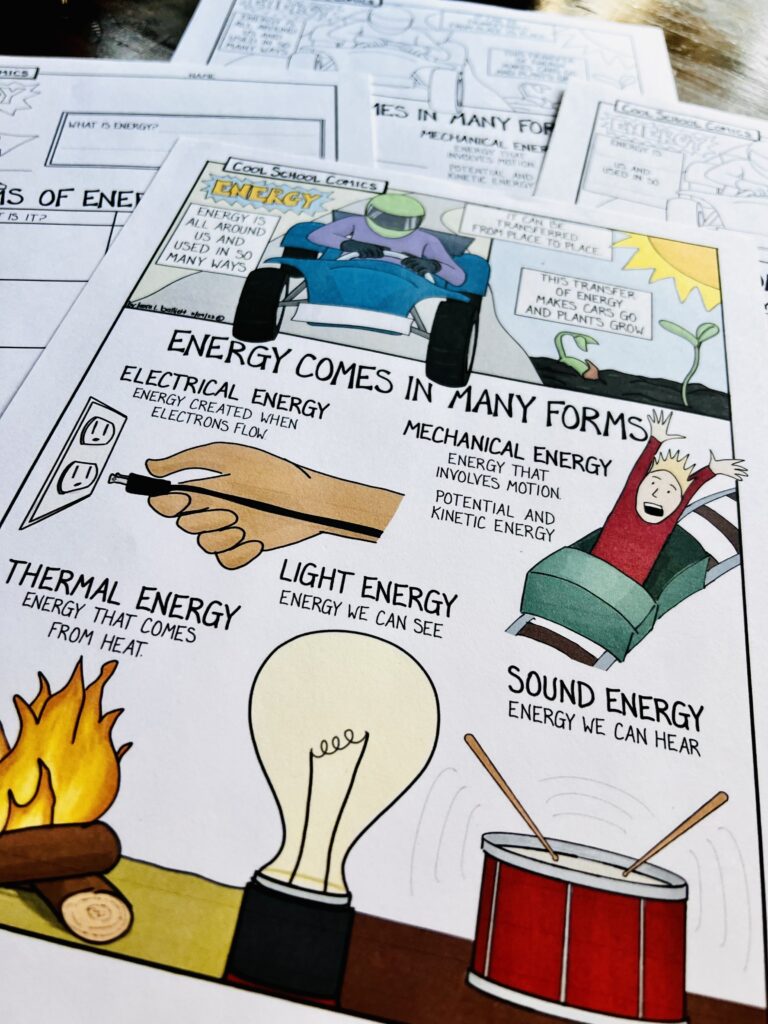Science cartoons have the power to reach today’s diverse population of learners because they improve accessibility, boost engagement, and portray information in a relatable manner. Across the globe, educators in elementary, middle, and home school classrooms are learning how to adapt to our ever-changing population of learners. Teachers are constantly searching for ways to adapt their teaching strategies to accommodate shorter attention spans, increasing diversity within one classroom, and larger gaps in reading abilities.
Science cartoons have the power to address this modern classroom environment by making content engaging and approachable.
Imagine the look on their faces when, instead of a textbook, you hand your students a comic-styled science cartoon. Jaws will drop and eyes will light up. Students will eagerly engage in the content because the illustrations are instantly engaging. Comics are a teacher’s secret weapon.
Relatability
Science cartoons and comics can speak directly to students in a manner they can relate to, and the illustrations and dialogue bubbles can make information more approachable. Instead of bulky paragraphs loaded with tricky vocabulary words, science cartoons present information in manageable chunks with relatable storylines.
When information is presented in a cartoon format, readers can connect with contextual clues and a narrative. The characters convey information through conversations and actions, and the sequential format aids in the process of decoding information. This makes the content more approachable to reluctant readers and students who have dismissed school as “boring.”

Accessibility
Science cartoons and comics improve accessibility because the use of illustrations makes it easier for readers of any skill level to gain some degree of understanding. The brain can register images within a fraction of a second making it easier for struggling readers to interpret the information without feeling the self-doubt they often feel when faced with paragraphs. Students who are challenged by short attention spans or language barriers can decode sentences with the help of captivating cartoons.
Many students find reading lengthy reading passages intimidating and instantly shut down when they are presented with a traditional text. To them, the paragraphs are a wall of words. Science comics have the power to break these paragraphs making the information more approachable and less intimidating.

Retention
Science cartoons improve retention because students want to read the content. They approach the information with curiosity. Frequently, learners are more motivated to read comics over traditional textbooks. This willingness to read makes learning fun, and as a result, they are more likely to retain the information.
Research has suggested that cartoons and comics tap into the power of visual learning. When ideas are tied to images, readers direct their attention and understand the information easier and better. This increases retention because it activates multiple facets of the brain.
Engagement
Science cartoons and comics are natural attention grabbers and rope learners into the content. The vivid colors and balance of words and imagery ignite curiosity and maintain attention. The more obvious reason why they remain engaged is because science cartoons and comics are fun. Children want to see what is going on and what is going to happen.
This is especially helpful for students who struggle with maintaining attention. The sequential delivery of the information and the ease of reading the shorter chunks of text helps readers maintain attention. Struggling readers to not get hung up on tricky concepts. Instead, they decode the information with the help of the images and continue to move through the reading passage.

Science Comics and Hands-on Learning
In addition to reading passages, science cartoons and comics can improve participation in hands-on activities. Presenting instructions in a visual format opens the door to participation and active learning. Many students resist reading instructions and consequently fail to understand the procedure in labs and projects. Just as reluctant readers shy away from paragraphs, they also tend to avoid instructions.
Purchase a bookshelf or small piece of furniture, and chances are you will have to assemble it at home. Most of the time, the instructions provided are full of illustrations. This is because instructions are easier to understand when they are paired with pictures. At the same time, the visuals help break down language barriers making it possible for multiple languages to assemble the product.
The same goes for activities in elementary and middle school science classrooms. When experiments and labs are tied to visual instructions accessibility and participation improve. Struggling readers are once again allowed to understand what is going on and keep up with the pace.

Leave a Reply